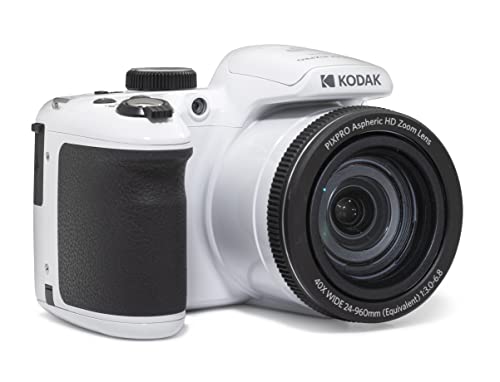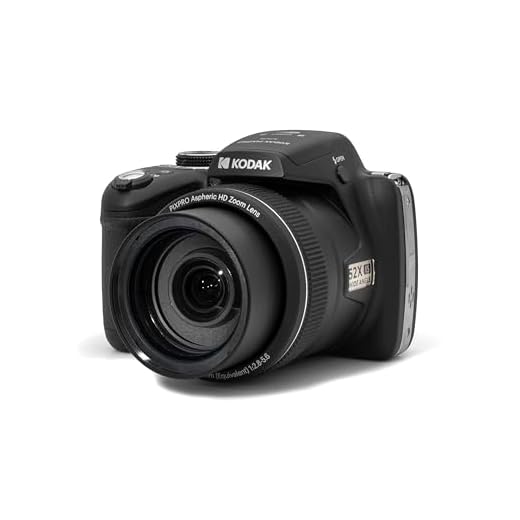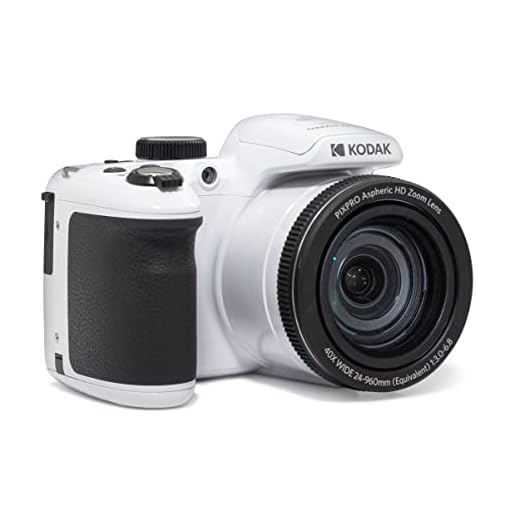




Digital cameras have revolutionized the way we capture images, especially when it comes to capturing movement. The technology behind digital cameras allows for faster shutter speeds, which is crucial when trying to capture a moving subject. Unlike traditional film cameras, digital cameras have sensors that can capture multiple frames per second, allowing for a series of images to be taken in quick succession.
This rapid capture of images means that digital cameras are better equipped to freeze motion and capture sharp, detailed images of moving subjects. Additionally, digital cameras offer features such as autofocus tracking and image stabilization, which help ensure that the moving subject remains in focus and the image is not blurry.
Furthermore, digital cameras have advanced image processing capabilities that can enhance the clarity and sharpness of images, even when capturing fast-moving subjects. The ability to adjust settings such as ISO, aperture, and shutter speed also gives photographers greater control over capturing movement in different lighting conditions.
Why Digital Cameras Capture Movement Better
One of the key reasons why digital cameras are able to capture movement better than traditional film cameras is due to their faster shutter speeds. Digital cameras have the ability to adjust their shutter speed quickly, allowing them to freeze motion and capture fast-moving subjects with greater clarity.
Additionally, digital cameras often have features such as continuous shooting mode, which allows them to take multiple shots in rapid succession. This can be particularly useful when trying to capture a moving subject, as it increases the chances of getting a sharp and well-focused image.
Image Stabilization Technology
Many digital cameras also come equipped with image stabilization technology, which helps reduce blurriness in photos caused by camera shake. This technology compensates for small movements of the camera during the exposure, resulting in sharper images, especially when shooting moving subjects.
High ISO Sensitivity
Another advantage of digital cameras when it comes to capturing movement is their high ISO sensitivity. This allows digital cameras to capture images in low light conditions without the need for a flash, making it easier to freeze motion in challenging lighting situations.
High Frame Rate
One of the key factors that contribute to digital cameras capturing better pictures of movement is the high frame rate they offer. A higher frame rate means that the camera can capture more frames per second, resulting in smoother and more detailed images of moving subjects. This allows digital cameras to freeze fast-moving subjects with greater precision and clarity compared to traditional film cameras. The ability to capture a higher frame rate also ensures that the camera can handle rapid movements without blurring, making it ideal for capturing dynamic scenes or fast action.
Advanced Autofocus System
One of the key reasons why digital cameras excel at capturing movement is their advanced autofocus systems. These systems use sophisticated algorithms and sensors to track moving subjects and adjust focus quickly and accurately. This allows the camera to keep the subject in sharp focus even as it moves, resulting in clearer and more detailed images of fast-paced action.
Traditional film cameras often struggled to keep up with fast-moving subjects due to their manual focus mechanisms and slower response times. In contrast, digital cameras with advanced autofocus systems can lock onto a subject and continuously adjust focus as needed, ensuring that each shot captures the moment with precision.
Image Stabilization Technology
Image stabilization technology plays a crucial role in digital cameras capturing better pictures of movement. This technology helps reduce blurriness and shake in photos caused by hand movements or camera shake during the exposure. By stabilizing the image sensor or lens, image stabilization technology allows the camera to compensate for movement, resulting in sharper and clearer images, especially in low light conditions or when capturing fast-moving subjects.
Fast Shutter Speed
One of the key factors that allow digital cameras to capture better pictures of movement is the ability to use a fast shutter speed. Shutter speed refers to the length of time the camera’s shutter remains open to let light in and capture an image. A faster shutter speed means the shutter opens and closes quickly, freezing the motion and reducing motion blur in the image.
Digital cameras offer a wide range of shutter speed settings, allowing photographers to select a fast shutter speed to capture fast-moving subjects with clarity. This is especially useful when photographing sports events, wildlife, or any fast-paced action where a quick reaction time is crucial.
By using a fast shutter speed, digital cameras can freeze the motion of a subject, resulting in sharp and detailed images even when the subject is in motion. This is one of the key advantages of digital cameras over traditional film cameras, as digital cameras can adjust the shutter speed quickly and easily to suit the shooting conditions.
Low Light Performance
One of the key advantages of digital cameras when it comes to capturing movement is their ability to perform well in low light conditions. This is due to the sensor technology used in digital cameras, which allows them to capture more light and produce clearer images even in dimly lit environments. The higher sensitivity of digital camera sensors to light means that they can capture faster-moving subjects with less motion blur compared to traditional film cameras. This makes digital cameras ideal for capturing moving subjects in low light situations, such as indoor sports or nighttime photography.
| Advantages of digital cameras | Ability to capture more light in low light conditions |
| Higher sensitivity to light | Less motion blur in fast-moving subjects |
| Ideal for indoor sports and nighttime photography | Clearer images in dimly lit environments |
Burst Mode Capability
Digital cameras are equipped with a feature called burst mode, which allows them to capture a series of images in rapid succession. This feature is particularly useful when photographing moving subjects, as it increases the chances of getting a clear and sharp shot.
When shooting in burst mode, the camera takes multiple shots in quick succession, allowing you to choose the best image from the series. This is especially helpful when capturing fast-moving subjects like sports events or wildlife.
Benefits of Burst Mode:
- Increased chances of capturing the perfect moment: By taking multiple shots in quick succession, burst mode increases the likelihood of capturing the perfect moment when photographing moving subjects.
- Improved image quality: With burst mode, you can select the sharpest and most focused image from the series, resulting in better image quality.
Improved Sensor Sensitivity
One of the key factors that allows digital cameras to capture better pictures of movement is their improved sensor sensitivity. Digital cameras use image sensors to capture light and convert it into digital signals, which are then processed to create an image. Compared to film cameras, digital cameras have sensors that are much more sensitive to light, allowing them to capture faster-moving subjects with greater accuracy.
The increased sensitivity of digital camera sensors enables them to capture more light in a shorter amount of time, resulting in sharper and clearer images of moving objects. This improved sensor sensitivity is especially beneficial in low-light conditions, where faster shutter speeds are necessary to freeze motion and prevent blurriness.
Furthermore, digital cameras often have advanced features such as high ISO settings, which can further enhance their sensitivity to light and improve their ability to capture fast-moving subjects. These technological advancements in sensor sensitivity contribute to the overall improved performance of digital cameras in capturing movement.
Enhanced Image Processing
One of the key reasons why digital cameras are able to capture better pictures of movement is the advanced image processing technology they employ. Digital cameras use sophisticated algorithms to process the raw image data captured by the sensor and enhance the final image quality.
These algorithms can reduce motion blur, improve dynamic range, and enhance overall image sharpness, resulting in clearer and more detailed pictures of moving subjects. Digital cameras also have faster processing speeds compared to film cameras, allowing them to capture multiple frames per second and select the best shot from a series of images.
Quick Response Time
One of the key factors that contribute to digital cameras capturing better pictures of movement is their quick response time. Digital cameras are equipped with advanced technology that allows them to capture images in a fraction of a second, resulting in sharp and clear photos of fast-moving subjects.
Traditional film cameras had a significant lag time between pressing the shutter button and actually capturing the image, which often resulted in blurry or missed shots of moving subjects. Digital cameras, on the other hand, have virtually no shutter lag, allowing them to capture the action at the exact moment it happens.
Optical Zoom Functionality
One of the key features that allows digital cameras to capture better pictures of movement is their optical zoom functionality. Optical zoom works by physically adjusting the lens to zoom in on a subject, rather than simply enlarging the image digitally like digital zoom does. This means that optical zoom preserves the image quality and detail, resulting in sharper and clearer images of moving subjects.
Advantages of Optical Zoom:
- Preserves image quality
- Allows for closer shots without loss of detail
- Enhances the ability to capture fast-moving subjects
FAQ
Why do digital cameras capture movement better than film cameras?
Digital cameras have faster shutter speeds and higher frame rates, allowing them to capture motion with more clarity and detail. Additionally, digital sensors can process images quickly, reducing motion blur.
How do digital cameras reduce motion blur in photos?
Digital cameras use advanced image stabilization technology and faster autofocus systems to track and capture moving subjects more accurately. This helps reduce motion blur and ensures sharper images of fast-moving objects.
What features of digital cameras make them better for capturing action shots?
Digital cameras often have burst mode settings, which allow them to take multiple shots in quick succession, increasing the chances of capturing a sharp image of a moving subject. Additionally, digital cameras offer customizable settings for adjusting exposure, focus, and white balance to optimize the capture of action shots.








